Do you love the happy little trees and mountains from Bob Ross? Now you can paint just like him, with this beginner’s guide to acrylic painting! In this post, we will discuss the basics of acrylic painting, including what supplies you need and how to get started. We will also show you how to paint a simple landscape in the Bob Ross style. So grab your paints and brushes, and let’s get started!
Can you paint Bob Ross style with acrylics?
The simple answer is yes! You can most definitely paint Bob Ross style with acrylics. In fact, many of the supplies that Bob Ross used are the same as what you would use for acrylic painting.
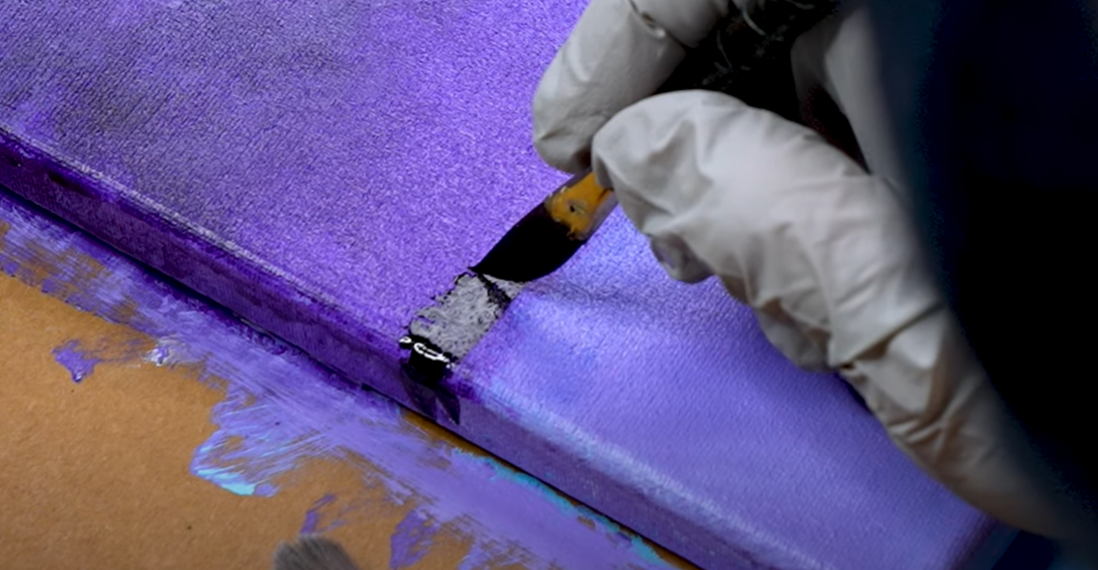
The first thing you will need is a set of acrylic paints. These can be found at any arts and crafts store, or online. Make sure to get a variety of colors, including white, black, and brown. Bob Ross often used very light colors, so don’t be afraid to go brighter than you think!
Next, you will need some brushes. Again, these can be found at any arts and crafts store. Look for brushes that are specifically made for acrylic painting. They will have synthetic bristles and be labeled “acrylic” or “synthetic”. Bob Ross used synthetic brushes because they are less likely to shed bristles into the paint.
You will also need a canvas. Bob Ross typically painted on 18-inch by 24-inch canvases, but you can use any size that you like. If you are a beginner, you may want to start with a smaller canvas so that you don’t feel overwhelmed. [1]
How do you paint Bob Ross with acrylics?
Now that you have all of your supplies, it’s time to start painting! Here are the basic steps for how to paint a Bob Ross landscape in acrylics:
1. Begin by sketching your landscape on the canvas with a pencil. This will help you plan out where each element will go.
2. Next, start painting the sky. Use a large brush and light blue paint to cover the entire canvas. Then, add some clouds by flicking white paint onto the blue sky.
3. Once the sky is complete, it’s time to start work on the mountains. Use a medium-sized brush and light brown paint to create the mountain shapes. Start at the bottom of the canvas and work your way up.
4. To add some dimension to the mountains, mix a small amount of white paint with the light brown. Then, use this new color to add highlights to the peaks of the mountains.
5. The last step is to paint the trees. Use a small brush and green paint to create tree shapes all over the landscape. Once the trees are in place, use a darker green or brown color to add some shadows. [2]
Choose an easy painting
Acrylics are a versatile medium that can be used for a variety of painting projects. For your first project, choose something simple like a landscape or still life. Bob Ross paintings often feature nature scenes, so this would be a good place to start. Once you’ve chosen your project, gather your supplies. You will need:
- Acrylic paint
- Paintbrushes
- Canvas or other painting surface
- Water
- Paper towels or rags
Before you start painting, you need to prepare your workspace. Cover your work surface with a drop cloth or old sheet to protect it from paint. Set up an easel if you have one, or prop your painting surface up on a flat surface. Make sure you have good lighting so you can see what you’re doing.
Now you’re ready to start painting. Begin by sketching out your design on your canvas or painting surface. Once you have a plan, start adding color. Bob Ross often used a “wet on wet” technique, meaning he would apply paint to a wet canvas. This creates a soft, blended effect.
When you’re finished painting, sign and date your work. Allow it to dry completely before framing or displaying it. And that’s it! You’ve successfully completed your first Bob Ross-style painting.
Easiest Bob Ross paintings
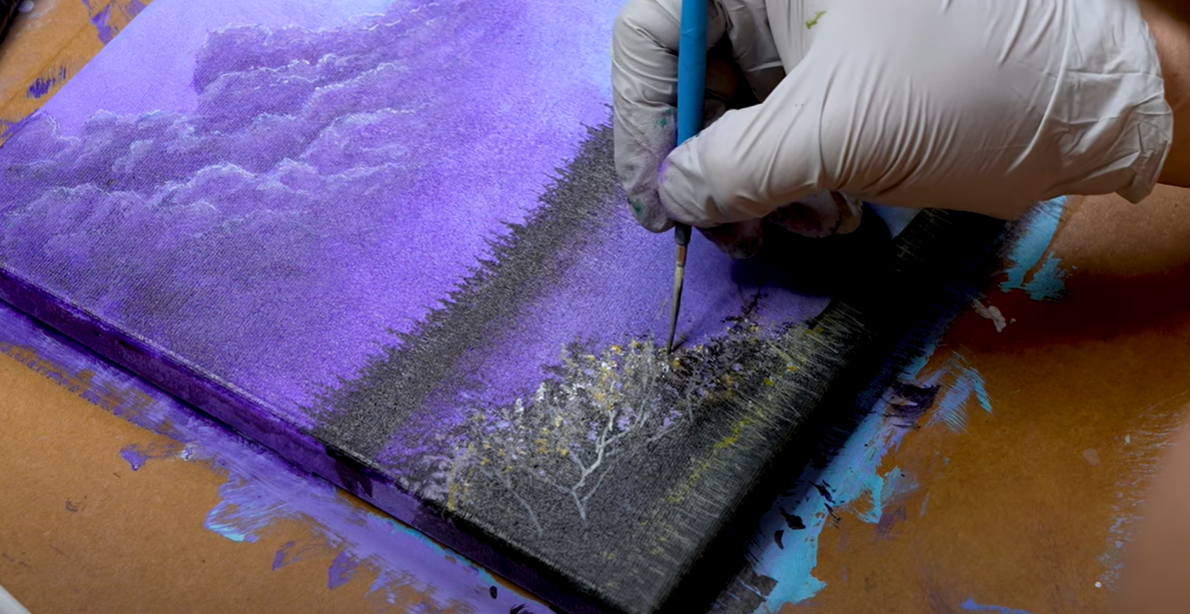
If you’re looking for a Bob Ross painting that’s easy to complete, try one of these beginner-friendly designs:
1. A Simple Landscape: This landscape features a mountain range in the distance and a lake in the foreground. To paint it, start by sketching out the basic shapes with a pencil. Then, use light blue paint to add sky color. Next, add mountains using light brown paint. Finally, finish up by adding trees and other vegetation.
2. A Country Cabin: This cabin scene is another good option for beginners. Start by painting the sky with light blue paint. Then, add mountains in the distance using light brown paint. Next, paint the cabin using a medium brown color. Finally, finish up with trees and other vegetation.
3. A Winter Scene: This winter landscape features a snowy forest scene. To paint, first use a pencil to sketch the shapes. Then, use white paint to add snow. Next, add trees using a medium green color. Finally, finish up with shadows and highlights.
4. A Tropical Beach: This beach scene is perfect for beginners who want to try painting something other than a landscape. Before you start painting, use a pencil to sketch out the basic shapes of your picture. Then, use light blue paint to add sky color. Next, add ocean waves using a medium blue color. Finally, finish up with sand and palm trees. [3]
Use acrylic effectively
Acrylic paint is a versatile medium that can be used for a variety of painting projects. To get the most out of this medium, follow these tips:
- Use a higher quality paint. Bob Ross used professional-grade acrylic paint, so it’s worth investing in some good-quality paint for your own projects.
- Start with a sketch. Before you start painting, sketch out your design on your canvas or painting surface. This will help you plan your composition and avoid making mistakes.
- Work in small sections. When you’re first starting out, it’s best to work in small sections so you don’t get overwhelmed. Once you’ve mastered the basics, you can start working on larger paintings.
- Don’t be afraid to make mistakes. Bob Ross himself said that “there are no mistakes, only happy accidents.” So if you make a mistake, embrace it and see what interesting effects you can create.
- With these tips in mind, you’re ready to start painting like Bob Ross. Just remember to have fun and experiment with different techniques. Soon enough, you’ll be creating your own beautiful works of art.
How do you keep acrylic paint from drying out so fast?
Acrylic paint dries quickly, so it’s important to keep your paints and brushes moist while you’re working. To do this, you can:
- Use a misting bottle to lightly mist your paints and brushes with water
- Cover your palette with a damp cloth or piece of plastic wrap
- Store your paints in airtight containers when you’re not using them
By following these tips, you can keep your acrylic paints from drying out too quickly. This will allow you to work longer and create more detailed paintings. [4]
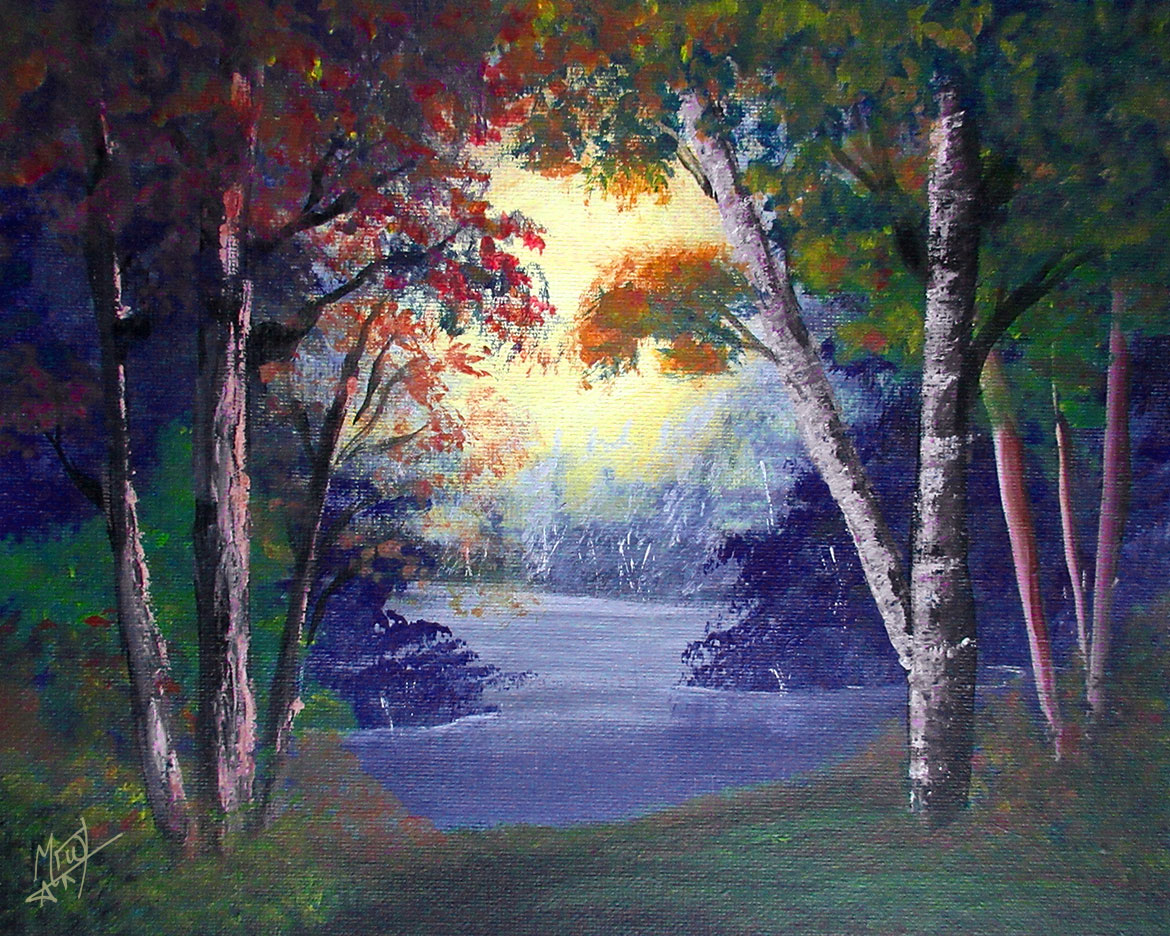
Acrylic paint retarder
An acrylic paint retarder is a substance that slows down the drying time of acrylic paint. This can be helpful if you want to work on a painting for a longer period of time or if you’re working in a humid environment.
You can mix a retarder into your acrylic paint to make the paint last longer. The amount of retarder you’ll need to use varies by brand and type, so be sure to consult the instructions on the packaging.
Acrylic gel
An acrylic gel medium is a thickening agent that can be added to acrylic paint to create a variety of effects. Gel mediums can be used to create texture, extend drying time, or change the consistency of your paint.
To use a gel medium, simply mix it with your acrylic paint before you start painting. The amount you need will vary depending on the brand and type of gel medium you’re using, so be sure to follow the directions on the package.
Gesso
Acrylic paint can be used without a primer, but using one can help to achieve better results. Gesso is a white paint mixture that is often used as a primer for acrylic paintings. It helps to create a smooth surface for the paint to adhere to and also provides a white base for light colors.
Plastic containers
Acrylic paint can be stored in plastic containers when you’re not using it. This is a good way to keep your paints from drying out and to prevent them from leaking.
To store your paints in a plastic container, simply pour the paint into the container and seal it tightly. Be sure to label the container so you know which color is inside.
Wet palette
A wet palette is a type of palette that has a dampened surface. This helps to keep your acrylic paints from drying out while you’re working. Wet palettes are especially useful if you’re working on a large painting or if you’re going to be working for an extended period of time.
To use a wet palette, simply dampen the surface with water and then add your paints. Be sure to cover the palette with a lid or plastic wrap when you’re not using it to prevent the paint from drying out.
Spray bottle
A spray bottle can be used to mist your paints and brushes with water to keep them from drying out. Simply fill the bottle with water and then lightly mist your palette or brushes when you need to.
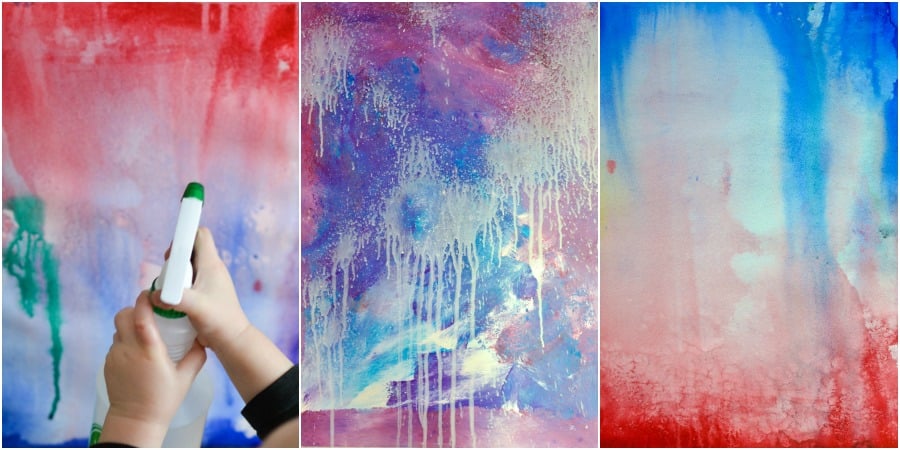
You can also use a spray bottle to create interesting effects in your paintings. For example, you can mist the surface of your painting with water and then immediately add paint. This will create a marbled effect.
What is the best kind of acrylic for wet-on-wet?
Wet-on-wet is a painting technique in which you apply paint to a wet surface. This can be done by painting on top of wet paint or by adding water to the surface before you start painting.
To use the wet-on-wet technique with acrylic paint, you need to choose a paint that is specifically designed for this purpose. Golden Acrylics makes a line of “fluid” acrylics that are perfect for wet-on-wet painting. These paints are highly pigmented and have a smooth, creamy consistency.
Open paint acrylics
Open paint is a type of acrylic paint that has a slow drying time. This allows you to work on your painting for a longer period of time before the paint starts to dry. Open paint is also less likely to become brittle and cracked as it dries.
To use open paint, simply apply it to your painting surface as you would any other type of acrylic paint. The amount of time you have before the paint starts to dry will vary depending on the brand and type of open paint you’re using, so be sure to follow the directions on the package.
Interactive acrylics
Interactive acrylics are a type of paint that can be used to create textured effects. This type of paint is often used for printmaking, but it can also be used to add texture to paintings.
To use interactive acrylics, simply apply the paint to your surface and then manipulate it with your hands or other tools. The amount of time you have to work with the paint will vary depending on the brand and type of interactive acrylics you’re using, so be sure to follow the directions on the package.
Acrylic gouache
Acrylic gouache is a type of paint that has a matte finish. It is similar to regular acrylic paint, but it is thicker and more opaque. Gouache can be used to achieve different effects in your paintings, depending on how it is applied.
To use acrylic gouache, simply apply it to your painting surface as you would any other type of paint. The thickness of the paint will create a matte finish. You can also add water to thin the paint and create a more transparent effect. [5]
How to Improve Wet-on-Wet Acrylic Painting?
Acrylics are a versatile medium that can be used for a variety of painting styles. One of the most popular styles is wet-on-wet painting, made famous by Bob Ross. Wet-on-wet painting is a technique where colors are applied to a wet surface, allowing them to blend and mix together.
This technique can be tricky to master, but with practice, you can produce some beautiful paintings. Here are a few tips to help you improve your wet-on-wet acrylic painting:
- Use fresh paint: Paint that has been sitting around for awhile will be thicker and harder to work with. If possible, use fresh paint for your wet-on-wet painting projects.
- Use a light touch: When applying paint to a wet surface, use a light touch. Too much pressure will cause the colors to muddy.
- Work quickly: Wet-on-wet painting techniques work best when you work quickly. If you don’t blend the paint quickly enough, it will begin to dry and become more difficult to work with.
- Experiment: Don’t be afraid to experiment with different colors and techniques. Wet-on-wet painting is a great way to explore your creativity and see what works best for you.
With these tips in mind, you’re ready to start painting like Bob Ross! Just remember to relax and have fun – that’s the most important part of painting. [6]
Bob Ross’ painting technique
Bob Ross was a famous TV painter who taught people how to paint “happy little trees” and other landscape scenes. He popularized the wet-on-wet painting technique, which is a method of applying colors to a wet surface. This technique allows the colors to blend and mix together, creating beautiful effects.
Once you have the right type of paint, you’re ready to start painting! Bob Ross used a “dry brush” technique, which means he applied very little paint to his brush. This allowed him to control the amount of paint on his canvas and produce clean lines. When applying paint to your canvas, use a light touch and work quickly. If the paint begins to dry before you have a chance to blend it, it will be more difficult to achieve the desired effect.
Detailing and layering
One of the great things about wet-on-wet painting is that it’s easy to add details and layers to your painting. To add a layer of paint, simply apply a new color over an existing color. The colors will blend together, creating a new effect.
To add details, you can use a variety of tools, including brushes, combs, and knives. Experiment with different tools to see what works best for you. Bob Ross often used a knife to apply paint to his canvas, which helped him create clean lines and shapes.
Remember, there are no rules when it comes to painting! So don’t be afraid to experiment and try new things. The more you practice, the better you’ll become at wet-on-wet painting.
Color mixing
Color mixing is an important part of painting, and it’s especially important when using the wet-on-wet technique. When colors are applied to a wet surface, they will blend and mix together. This can create some beautiful effects, but it can also be tricky to control.

To mix colors, start by applying a light layer of one color. Then, add a second color on top of the first color. The colors will begin to blend together, creating a new color. To achieve different effects, you can experiment with different ratios of paint. For example, if you want a more subtle effect, use less of the second color. If you want a more pronounced effect, use more of the second color.
Upgrade the acrylic painting
Acrylic paint is a versatile medium that can be used for a variety of different projects. If you’re looking to upgrade your acrylic painting skills, here are a few tips:
1. Use a variety of brushes: When painting with acrylics, it’s important to use a variety of brushes. Different brushes can produce different effects, so it’s important to experiment and find the ones that work best for you.
2. Use a canvas or paper: Canvas and paper are both great surfaces for painting with acrylics. If you’re just starting out, it might be helpful to use paper so you can get a feel for the paint before moving on to canvas.
3. Use a variety of colors: Acrylic paint comes in a wide range of colors, so don’t be afraid to experiment with different hues. Try mixing and matching different colors to see what you can create.
4. Use a variety of techniques: There are a variety of different painting techniques you can use with acrylics. Experiment with different techniques to find the ones that work best for you.
5. Take your time: Painting with acrylics can be messy, so it’s important to take your time and be patient. Don’t worry if your first few paintings aren’t perfect – it takes practice to master this medium.
FAQ
What paint do I need to paint like Bob Ross?
To paint like Bob Ross, you’ll need a few supplies. First, you’ll need a set of high-quality acrylic paints. Bob Ross used his own line of paints, but any similar set will work just fine. You’ll also need a selection of brushes – one or two large ones for the base layers of your painting, and a few smaller ones for the details. Finally, you’ll need a canvas – Bob Ross paintings are usually done on small canvases, so don’t go too big!
Can acrylic paint be used like oil paint?
Yes, acrylic paint can be used like oil paint. The two mediums share many similarities, but there are a few key differences. Acrylic paint dries faster than oil paint, so you’ll need to work quickly. Acrylic paint is also more forgiving than oil paint – if you make a mistake, you can simply wipe it away with a wet cloth.
What happens when you mix oil with acrylic paint?
If you mix oil and acrylic paint, the oil will not mix with the acrylic paint. The two mediums are not compatible, so the oil will sit on top of the acrylic paint and will not dry. This can create an interesting effect, but it’s not ideal if you’re trying to create a smooth, even surface.
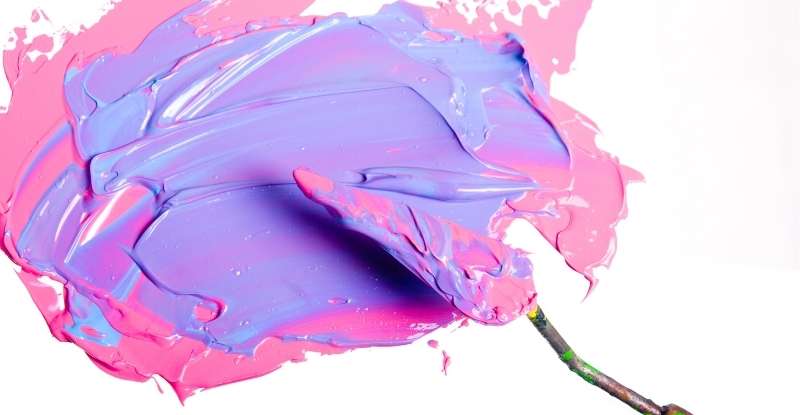
Can you use the same brushes for oil and acrylic?
No, you cannot use the same brushes for oil and acrylic. The two mediums require different types of brushes. Oil paint is thicker than acrylic paint, so it requires a sturdier brush. Acrylic paint dries quickly, so it requires a brush that can hold more paint.
Are oil paintings more valuable than acrylic?
The value of a painting is determined by many factors, including the artist’s reputation, the painting’s subject matter, and its age. In general, oil paintings are more valuable than acrylic paintings. This is because oil paint has been used for centuries, and there are more established artists who work in this medium. However, there are many talented acrylic painters out there, so the value of an acrylic painting can vary depending on the artist and the painting itself.
Useful Video:Paint Like Bob Ross BUT With Acrylic Paint!
Conclusion
Bob Ross style is one of the most popular painting styles. Many people want to know if they can use acrylics to paint Bob Ross style. The answer is yes! Acrylics are a versatile medium that can be used to create beautiful paintings in the Bob Ross style. With a little practice, anyone can learn to paint like Bob Ross. Try experimenting with different techniques and colors to see what works best for you. Who knows, maybe you’ll even discover your own unique painting style along the way!
References
- https://mhscardinalchronicle.com/2718/lifestyles/paint-like-bob-ross-on-a-budget/
- https://theartsherpa.com/theartsherpacommunity/event/417/bob-ross-in-acrylic-ways-you-can-still-paint-along
- https://blog.twoinchbrush.com/article/the-5-easiest-bob-ross-paintings-for-beginners/
- https://willkempartschool.com/10-ways-to-stop-acrylic-paint-drying-too-fast/
- https://ebbandflowcc.com/acrylic-gouache/
- https://sustaintheart.com/can-you-do-wet-on-wet-with-acrylics/

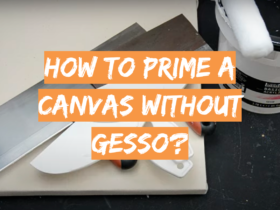



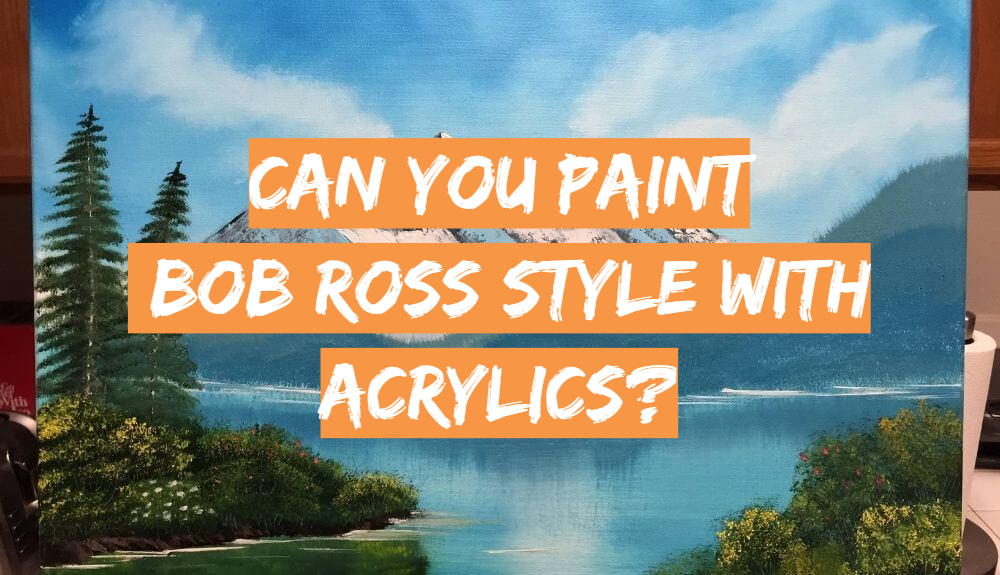
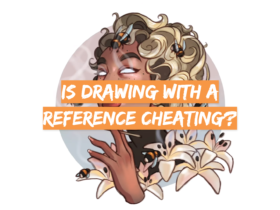
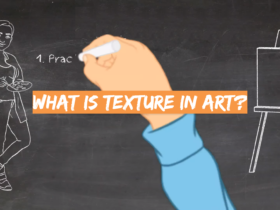
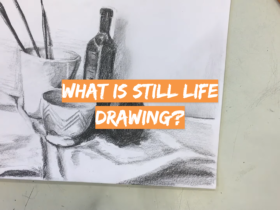
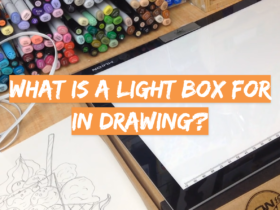
Leave a Review